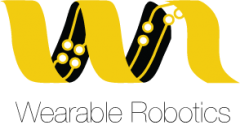Goals
The main goal of project 7 “Advanced upper extremity orthoses for functional support of patients with muscle weakness” is to enhance arm function to make the execution of the most essential actives of daily living possible again. For healthy people these activities might seem simple things like drinking a glass of water or bringing food to your mouth. But for patients with severe muscle weakness (typically boys with Duchenne dystrophy) these activities are very exhausting or even impossible to perform in already an early stage of life (10-20 y/o).
Approach

In this project we build further on the knowledge of previous projects such as the passive arm orthoses of Yumen Bionics and the active A-gear of Flextension. The first step is to determine the Use Case and Design requirements, then the hardware design and realization take place together with developing the control strategy. Once we have a safe and working demonstrator we will (clinically) validate the working principle in both healthy control subjects as DMD patients.
Progress
In the last couple of months, a lot of work has been performed in the hardware design, production and control development of the upper extremity support. The design of the orthosis demonstrator is finalized, it contains four series elastic actuators (3 around shoulder, 1 at elbow). The demonstrator is currently under production and is expected around summer 2022. Our sponsor FESTO played a big role in producing the four new Mini Actuators designed in project 4. The first test actuator (mini Actuators of Project 4) is used in a simplified elbow support to get familiar with the hardware and test control approaches.

The demonstrator will be connected to a Wearable Basestation which provide the actuators with power using medical approved batteries. This Basestation contains an industrial computer of Beckhoff.
Integration
This project integrates several parts from different projects withing the Wearable Robotics consortium. The arm support is actuated with the newly developed Mini Actuators (PR4) to support a wider range of functions. Depending on the progress of technical innovations within the program consortium, we might integrate EMG embedded sensor (PR5); a wrist soft orthosis (PR2/PR3); and/or a trunk shell orthosis (PR3). See the other projects.
Who & Where
This project is jointly carried out at TUDelft, Radboudumc and UTwente. The functional requirements for patients with muscle weakness have been extensively explored at Radboudumc. The prototype is built at DEMO (TUDelft). The control of the exoskeleton will be developed with involvement of the PhD student (TUDelft) in close collaboration with the Biomechanical Engineering Department (UTwente). Preliminary evaluations will be performed at the biomechatronics lab at TUDelft and/or UTwente, whereas patient evaluations will be done at Radboudumc.
Sponsors
Sponsors of this project are NWO, Duchenne Parent Project, Spieren voor Spieren, Festo, Yumen Bionics, Baat Medical, FSHD stichting.

